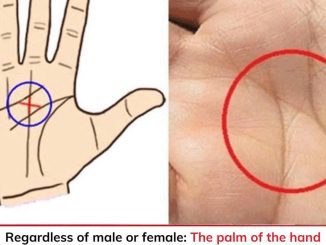Grease stains are one of those pesky household problems that everyone encounters at some point. Whether it’s from cooking, eating, or an accidental spill, these stains seem to have a mind of their own, refusing to budge even after washing and ironing. If you’ve tried using brown paper and heat only to see the stain persist, don’t worry—you’re not alone.
Why Are Grease Stains So Stubborn?

Grease stains are made of oils and fats that easily embed themselves in fabric fibers. Unlike water-based stains, which dissolve and wash out with water, grease repels water due to its hydrophobic nature. This makes standard washing methods ineffective against these stubborn marks.
Moreover, ironing or applying heat without removing the grease first can make matters worse. Heat causes the oil molecules to bond more tightly to the fabric, essentially “setting” the stain and making it more challenging to remove.
Common Mistakes When Treating Grease Stains
Before we jump into solutions, let’s clear up a few misconceptions about grease stain removal:
- Using Hot Water Immediately
Hot water may seem like the logical choice for cleaning, but it can set the stain further into the fabric if used too soon. - Ironing Before Treating
Heat from ironing can make the grease stain more permanent, as it pushes the oils deeper into the fibers. - Skipping Pre-Treatment
Washing a garment without pre-treating the stain is often ineffective, as regular detergents may not be strong enough to break down grease.
Why the Brown Paper and Ironing Method Falls Short
The idea behind ironing with brown paper is to melt the grease with heat and allow the paper to absorb it. However, this method isn’t foolproof. If the grease has already set, or if the paper isn’t absorbent enough, the stain will remain. Worse yet, the ironing may inadvertently lock the grease further into the fabric.
Effective Pre-Treatment for Grease Stains
Proper pre-treatment is the key to tackling grease stains. Here’s how you can prepare the fabric for cleaning:
- Blot, Don’t Rub
Start by blotting the stain with a clean cloth or paper towel to absorb as much grease as possible. Avoid rubbing, as this can spread the stain. - Apply Dish Soap
Dish soap, designed to cut through grease on dishes, works wonders on fabric as well. Apply a few drops directly to the stain, gently working it into the fibers using your fingers or a soft brush. - Let It Sit
Allow the soap to sit on the stain for at least 15 minutes. This gives it time to break down the grease. - Rinse with Warm Water
Rinse the treated area with warm water to remove the loosened grease before washing.
Home Remedies to Tackle Grease Stains
If you’re looking for natural or DIY solutions, here are some tried-and-true remedies:
- Baking Soda or Cornstarch
Sprinkle baking soda or cornstarch generously over the stain to absorb excess oil. Let it sit for 30 minutes, then brush it off and follow up with a pre-treatment. - Vinegar and Water Solution
Mix equal parts white vinegar and water. Dab this mixture onto the stain to break down the grease. Rinse thoroughly before washing. - Lemon Juice and Salt
For lighter fabrics, a combination of lemon juice and salt can work as a natural degreaser. Be cautious, as this method may cause fading on colored fabrics.
Commercial Products for Stubborn Stains

If home remedies don’t work, it may be time to bring in the big guns. Enzyme-based detergents and specialized stain removers are formulated to tackle grease effectively. Here are a few popular options:
- OxiClean
A versatile stain remover that works well on various types of stains, including grease. - Zout
Specifically designed for tough stains, Zout is an excellent choice for grease and oil spots. - Dawn Powerwash
This dishwashing spray doubles as a fabric grease remover when applied directly to stains.
Step-by-Step Guide to Removing Grease Stains
Follow this process to give your sweatshirt a fighting chance against grease:
- Blot the Excess
Use a paper towel or clean cloth to absorb as much grease as possible. - Pre-Treat the Stain
Apply a small amount of dish soap, stain remover, or baking soda to the stain. - Wait for 15–30 Minutes
Let the pre-treatment sit to penetrate the fabric and loosen the grease. - Wash in Hot Water (If Safe)
Check the care label and use the hottest water the fabric can handle. Add a heavy-duty detergent to the wash. - Inspect Before Drying
Air-dry the sweatshirt if the stain persists, as heat from the dryer can set it further. - Repeat if Necessary
Some stains may require multiple treatments to disappear entirely.
How to Prevent Future Grease Stains

Prevention is always better than cure. Here are some tips to keep grease stains at bay:
- Wear Protective Clothing
An apron or old shirt can shield your good clothes while cooking. - Act Quickly
The sooner you treat a grease stain, the easier it is to remove. - Avoid Heat Before Cleaning
Never apply heat to a stain until you’re certain it’s gone. - Use Fabric Protectors
Products like Scotchgard can repel oils and make cleaning easier.
Conclusion: Say Goodbye to Grease Stains
Grease stains might be frustrating, but they’re not undefeatable. By understanding the nature of grease, avoiding common mistakes, and using effective pre-treatment and cleaning methods, you can restore your sweatshirt to its original state. Armed with these tips and tricks, you’ll no longer have to live with stubborn stains. Remember, patience and persistence are your best allies in the battle against grease!


